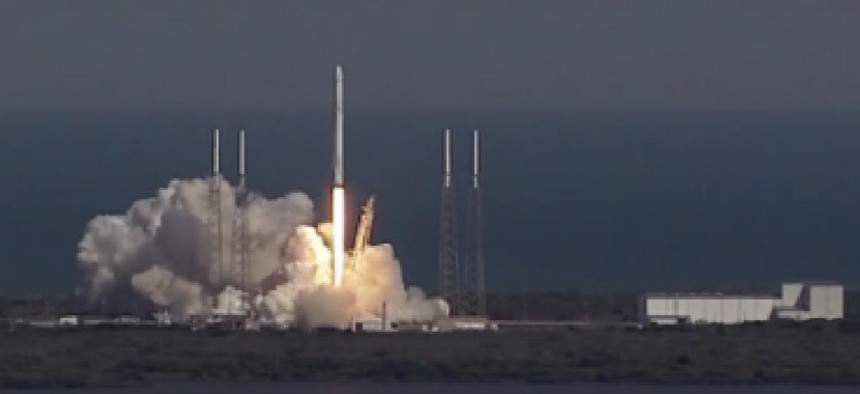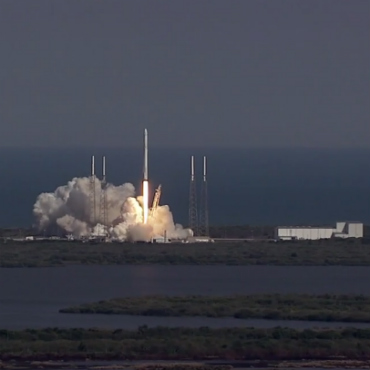FAA challenged by growing commercial space industry

The flight agency is looking to adapt and expand its mission to meet the demands of growing space commercialization.

The SpaceX Dragon launches at Cape Canaveral in April 2016. (Image courtesy: NASA)
Space traffic is on the rise. The Federal Aviation Administration saw a 55 percent increase in the number of launch applications filed by private companies in fiscal 2016 compared to the year before, according to the agency's administrator.
Those applications, according to FAA Administrator Michael Huerta’s remarks at the 20th Annual Commercial Space Transportation Conference in Washington, D.C., covered a range of ever-more diverse space vehicles from reusable and small-payload rockets, to high-altitude balloons and space vehicle carrier aircraft.
Companies such as SpaceX, Blue Origin and Virgin Galactic are evidence of a growing and diversifying space vehicle industry. Huerta likened the phenomenon to the early stages of the aviation industry a century ago.
"Space is not the exclusive domain of the government. Industry is democratizing space, launching more vehicles from more launch sites than ever," he said.
The FAA is moving to smooth out its own processes and technology to allow for more frequent launches with more safety checks. Those moves include a possible takeover of space traffic control, or space situational awareness, from the Department of Defense.
It is also investigating how to restructure its current regulatory framework, which focuses on aircraft, to make it appropriate for a variety of airborne vehicles, including include high-performance jets, balloons and the aircraft portion of hybrid systems that also contain a rocket-powered launch vehicle.
Huerta said the FAA's tests of a system that can more quickly turn air restrictions on and off over geographic areas for an increasing number of launches is progressing well at Florida's Cape Canaveral. The system, he said, is needed as not only the number of launches increases, but the locations of those launches mulitply as spaceports are built across the country.
"Space launches are now exceptional" events that can shut down commercial aircraft flight paths for hours, he said. With the growing number of space or near-space launches and vehicles, such delays can't continue or they will threaten commercial flight paths and companies.
Tests of a system that can automatically determine and apportion airspace between commercial space launches and ordinary air traffic are underway. The Space Data Integrator system test at Cape Canaveral in December saw "extremely positive results," he said.
Along with those activities, Huerta called on the burgeoning commercial space industry to help develop categories of emerging space ports. Vehicles launched into space, or near space, can range from small rockets, to large aircraft-sized "lifting bodies" that boost payloads into orbit, making a categorization system for the places they launch from necessary -- what's safe for a small rocket probably won't be for a larger vehicle.
Despite the growing workload to support commercial activities, the agency is working with a limited commercialization budget, said George Nield, the FAA's associate administrator for commercial space transportation. The department, he said, gets about $10 million, which hasn't increased under the continuing resolution. Ninety percent of that budget, he said, goes to employee salaries and benefits.
Despite the flat budget, the office saw launches and re-entries shoot up from 17 in fiscal 2016 to between 36 and 43 in fiscal 2017. He said he expects that number to double by fiscal 2018.
Integrating launches with regular air traffic, he said, is a priority for his office, and he also hopes to advance work with the Defense Department on what amounts to space traffic control. To do that, he said, FAA needs authorization to use the space situational data as well as immunity from lawsuits in using the data, just like DOD.
NEXT STORY: DOJ seeks help with telecom transition


